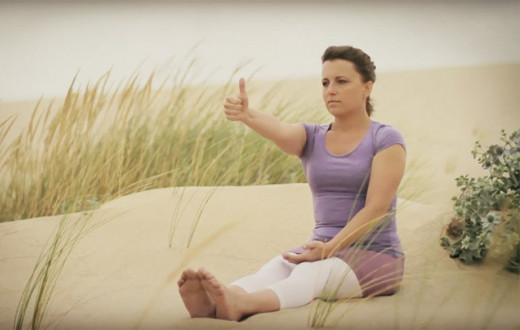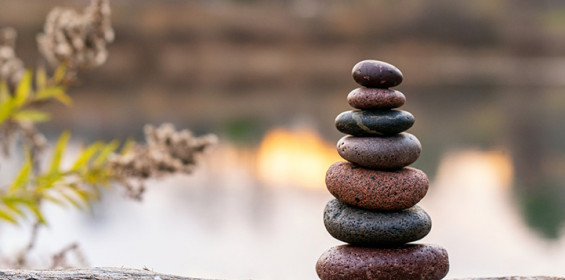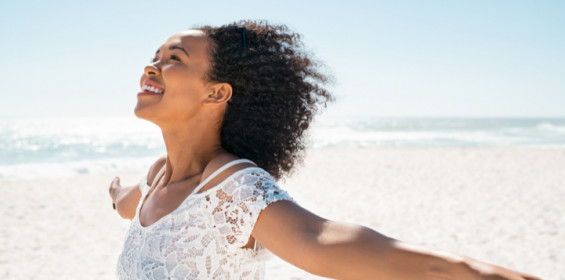Updated by: Sejal Shah EYRT-500
The human spine is formed of multiple vertebrae which protect and support the spinal cord. This set of bones are responsible for the ability to standor sit in an upright position. In scoliosis, a condition particularly related to the spine, the individual's spine is not straight but rather curved. A person whose spinal curvature is more than 10 degrees to the right or left, or even front or back can be a victim of Scoliosis. This particular deformity is observed amongst at least 0.5% population across the world and has more chances of occurrence amongst women.
In scoliosis, curvature can take place anywhere in the vertebral column but there are generally four common patterns: the right thoracic scoliosis, the left lumbar scoliosis, the right thoraco-lumbar, the right thoracic-left lumbar combined curve. Scoliosis can be either structural or functional. The structural variety is much more serious and develops as a result of unequal growth of the two sides of the vertebral bodies. Functional scoliosis, much more common than structural scoliosis, only affects the back muscles and does not structurally alter the body. It can result from poor posture or repeated unbalanced activity, such as always carrying books or bags on one side. It is generally less noticeable since the degree of curvature is less, and most of the time reversible. Upon stretching forward, if the curve disappears, then generally it is functional scoliosis.
Corrective measures
Scoliosis restricts the individual's movement capabilities and can be utterly painful. While surgery is a popular option for people suffering from Scoliosis, it is also advised to look into other forms of corrective measures before going under the knife. Of the various options available today, yoga is one which has been around for probably the longest time and is also very effective. An ancient technique that not only helps at a physical level but also works at the mental level, rendering courage and patience to overpower the pain associated with Scoliosis.
Bracing for change
The spine bears most of the weight of the body and hence is under constant stress. In the case of scoliosis, this stress aggravates the pain further. Yoga helps strengthen the leg muscles, back muscles, and core muscles thus taking off a considerable amount of stress of the spine. Yoga is a mix of breathing techniques and different postures specifically aimed at correcting the spine's shape. It may cause a bit of pain initially as the body gets adjusted to the postures, but will eventually subside and help you a long way. So, let's get started with some simple yoga postures that will get your spine back in proper shape and rid you of Scoliosis.

True to its name, the Warrior pose brings courage, grace and valor to the body and mind. The Warrior 1 and Warrior 2 help release the constricted psoas muscles in lumbar scoliosis. They also strengthen the lower back, improve balance in the body and enhance the stamina. A stronger back and will can be of great help when dealing with Scoliosis.

The Triangle pose is a standing pose that stretches the spine and increases mental and physical equilibrium. It also reduces stress and back pain, letting the pain subside.

The Cat pose is done on all fours. This kneeling pose opens space between vertebrae in the spine and stretches the supporting muscles and tendons, which can help loosen up the back. It adds more flexibility to the spine, improves blood circulation and relaxes the mind and is very good for those suffering from scoliosis.

Another sitting pose, the Child pose calms the nervous system and also relaxes the back. This particular pose is ideal for the people who suffer from scoliosis as a result of neuromuscular condition.
This pose stretches the lower back and relieves stress. It also reduces anxiety and fatigue and calms the mind. To make it easy, you may use props like blankets, bolsters or a chair.

This yoga posture lengthens the spine and brings strength throughout the body, especially the arms, shoulders, legs and feet. Due to the help of this pose, the weight of the body can be distributed better to the legs and thus take stress off the spine.

This posture stretches and strengthens the spine and back muscles. It also reduces anxiety and stress and calms the brain.

The Locust pose adds flexibility and strength to the entire back. It also relieves the body of stress, fatigue and lower back-pain.

The Shoulder stand makes the spine flexible and strengthens the arms and shoulders. This yoga pose also relaxes the mind.
End your yoga practice by lying down in the Corpse pose for a couple of minutes. This pose takes the body into a state of meditation and is also rejuvenating.
Apart from the above postures, you also want to practice poses that help stretch the upper spine. For upper back stretching and strengthening, Gomukhasana (Cow Face Pose) and Bharadvajasana (Seated Spinal Twist) are recommended.
According to WebMD, people with scoliosis who held a single yoga pose for 1 to 2 minutes a day for several days a week greatly reduced the curvature of their spine, according to a study published in the September issue of Global Advances in Health and Medicine. The National Scoliosis Foundation recommends these 11 postures.
Pranayama and meditation
Yogic breath pranayama and Nadi Shodhan pranayama can help a lot to expand lungs as they stretch and strengthen chest muscles. The Panch kosha meditation helps accept the situation proactively and improve awareness and patience. Hari Om or Chakra Meditation help cleanse and energise 'chakras' and 'naadis' which in turn facilitates smooth flow of 'prana'. Doing meditations with back support may make it easy initially.
Patience is the key
Like any other practice, the effects of practising yoga will show with time. Have patience and be consistent with your practice. You can join a local Sri Sri Yoga course and learn more postures specific to healing Scoliosis. Practising yoga in a group is also a great way to unwind and is quite popular these days.
Respect your limits
Yoga requires a certain amount of physical exertion and thus you are advised to proceed with caution. Don't stress your body or push your limits too much. Regular yoga practice will help increase your ability with time. Stretch only as much as your body can comfortably and relax there. It is best to practice under the guidance of a yoga expert who knows how to handle such physical conditions like scoliosis.
Optimism helps!
Scoliosis can be handled better by keeping a more optimistic outlook towards life. Speak to your friends and family, their support can help keep your spirits high. Have patience and faith in your practice, be consistent and enjoy it to the fullest. Yoga is a journey of self-awareness. By taking the time and energy to focus on your body and find more alignment and balance, you are giving yourself a wonderful and empowering gift. By directing loving attention to your breath while you stretch and align yourself in yoga postures, you can transform the pain or feelings of imbalance into self-acceptance and freedom.
While a regular yoga practice can result in improved health, know that it is not a substitute for medical treatment. It is important to learn and practice yoga under the supervision of a trained teacher. In the case of a medical condition, practice yoga after consulting a doctor. Do you need information on courses? Contact us at programs@us.artofliving.org to find a Sri Sri Yoga course at an Art of Living Center near you.































